Your Coffee Table is a Mess, Isn’t It? Let’s Fix That.
I’ve walked into hundreds of homes over the years, and the first thing I almost always notice is the coffee table. It’s supposed to be the heart of the living room, the anchor for connection and relaxation. Yet, more often than not, it becomes a magnet for chaos. You know what I’m talking about—a graveyard for old mail, a tangled nest of remote controls, forgotten coffee mugs, and probably a laptop.
In this article
That piece of furniture, which should be a point of beauty, ends up being a source of low-grade, constant stress. It just makes the whole room feel… off.
I remember one client’s home vividly. The room was gorgeous, but their big oak coffee table was completely buried. It was a classic case of function steamrolling form. They used it for everything, and boy, did it show. My job wasn’t to tell them to stop using their table. It was to help them create a system that was both beautiful and practical. We worked together to turn that dumping ground into a curated centerpiece, and the change in the room’s energy was instant. It felt calmer, more intentional, and way more inviting.
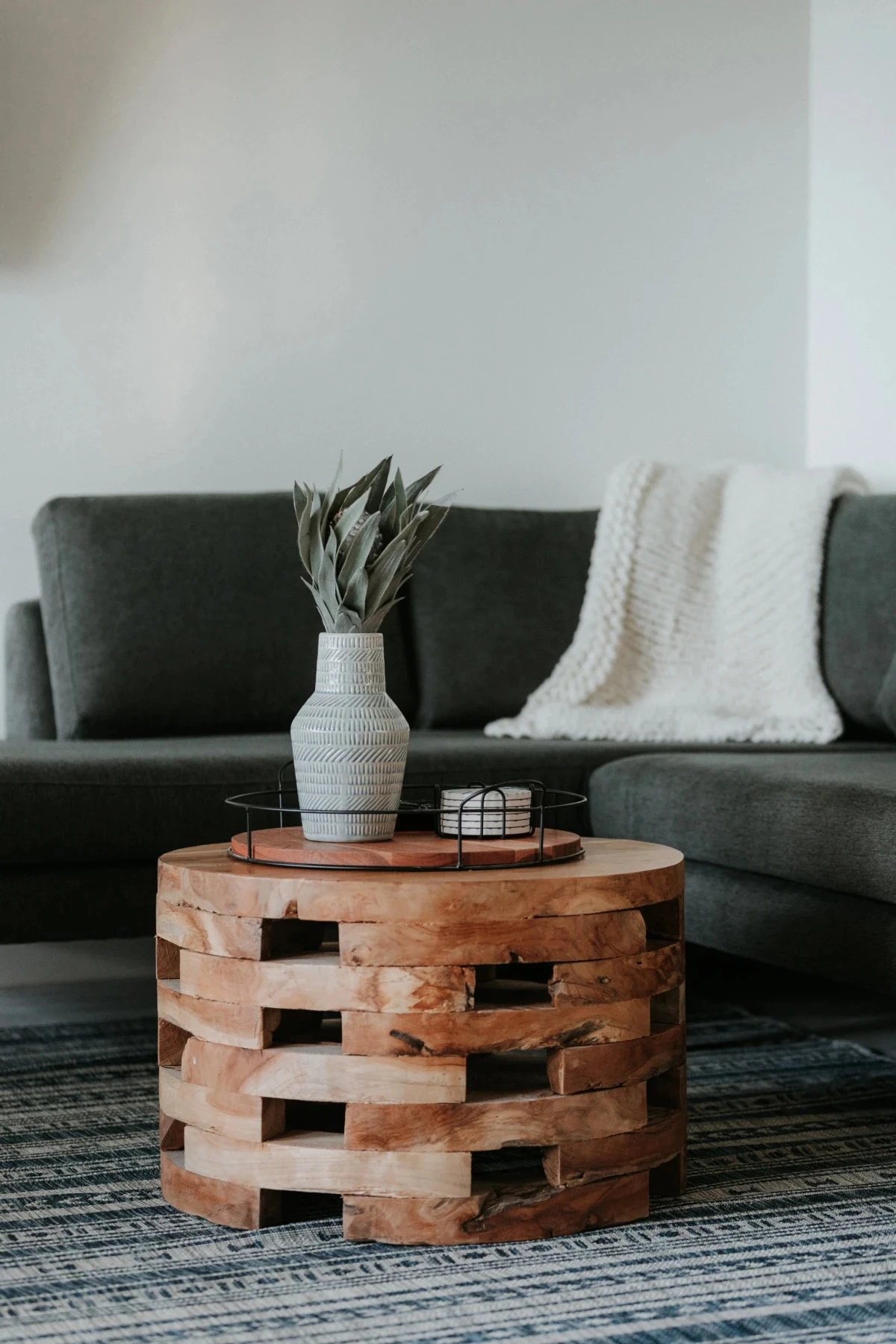
A coffee table isn’t just a low surface for drinks. It’s the visual glue that holds all the other furniture together. Getting it right is about more than just making things look pretty; it’s about creating harmony and showing off a bit of your personality. So, let’s dive into the principles and tricks the pros use to strike that perfect balance.
First, Let’s Understand the ‘Why’
Before you even think about putting a single object on your table, it helps to get a grip on a few basic design ideas. These aren’t strict, scary rules—they’re just guidelines that explain why some arrangements feel so right. Honestly, knowing the ‘why’ makes the ‘how’ about a thousand times easier.
Visual Weight and Balance
Every object has ‘visual weight.’ This has nothing to do with how heavy it is, but everything to do with how much it grabs your attention. A tall, dark vase has way more visual weight than a small, clear glass paperweight. The goal is to balance this weight across the table so it doesn’t feel like it’s about to visually tip over.
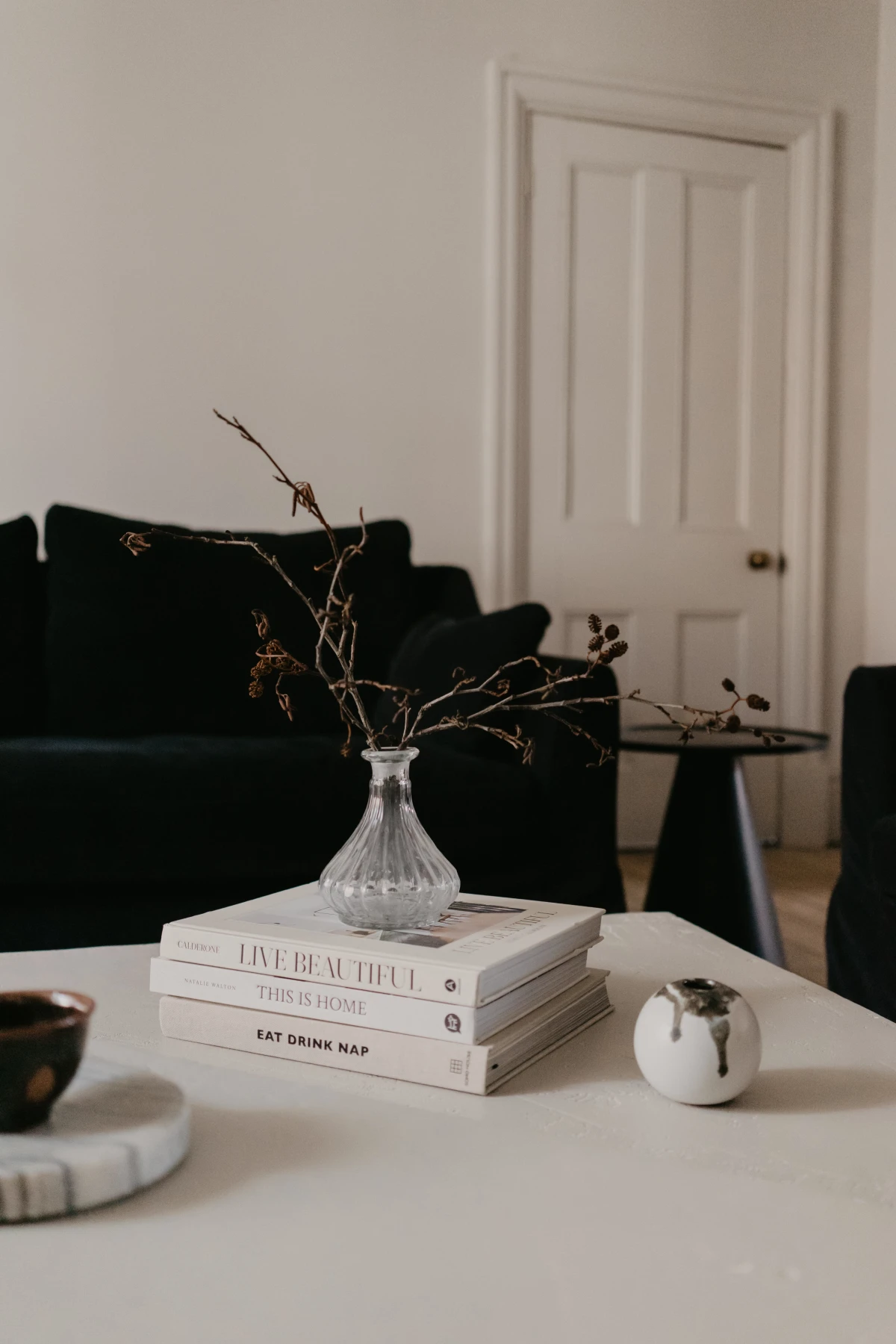
- Symmetrical Balance: This is the straightforward approach. Imagine a line down the middle of your table. You’d place matching items on each side—two identical candles, for example. It feels formal, orderly, and very calm. It works beautifully in more traditional spaces.
- Asymmetrical Balance: This is where things get more interesting and modern. Instead of matching items, you balance things of different sizes and shapes. For instance, a tall vase on one side can be balanced by a stack of three books and a small bowl on the other. The little group of items works together to equal the visual weight of the one big item. This creates more energy and feels more relaxed. To be frank, this is how most professionals style.
Getting the Scale Right
Scale is all about the size of your decor in relation to the coffee table itself. If your stuff is too big or too small for the table, the whole setup will just look awkward.

A good rule of thumb? Your entire arrangement shouldn’t hog more than two-thirds of the tabletop. You still need room to, you know, live your life and put down a drink or a book. A huge, chunky coffee table with a few tiny trinkets will make those items look lost and sad. On the other hand, a small, delicate table will be completely overwhelmed by a massive sculpture.
A Pro’s Go-To Styling Toolkit
Over the years, I’ve developed a handful of techniques that I use on almost every single project. They’re simple, they’re repeatable, and they just plain work.
Technique 1: The Magic of Threes
For some reason, our brains find groupings of odd numbers more visually appealing than even numbers. Grouping items in threes (or fives, if you have a massive table) creates a natural sense of harmony that a simple pair just can’t match. An even number of items can look static; an odd number makes your eye move around, making the whole thing more dynamic.

Technique 2: Layering with Height
A flat landscape is boring, and the same goes for your coffee table. To create real interest, you need to vary the heights of your objects. Think of it like creating a mini skyline on your tabletop.
- High Point: This is your showstopper. It could be a vase with some tall branches, a slender sculpture, or an elegant candlestick.
- Mid-Point: This could be a potted plant, a nice candle in a jar, or a sculptural object.
- Low Point: This is your base layer. A stack of two or three pretty books, a decorative tray, or a low, wide bowl all work perfectly.
Technique 3: The Power of the Tray
If I could only recommend one styling item, it would be a tray. A tray is a stylist’s secret weapon. First, it corrals all your smaller items, turning a random collection of things (a candle, a small vase, a coaster) into a single, cohesive unit. Instant organization.

Second, it’s incredibly practical. When you need to clear the table for game night, you just lift the whole tray and move it. Done. Third, it adds another layer of texture and color. A warm wood tray can soften a cold glass table, while a rustic metal one can add an industrial edge.
Quick tip: Aim for a tray that’s about one-third the length of your table. You want it to ground the arrangement, not swallow the whole surface. You can find fantastic options at places like HomeGoods, Target, or even thrift stores, usually for between $20 and $60.
Technique 4: Mixing Textures and Materials
An arrangement made of only shiny, smooth things can feel cold and flat. To create depth and warmth, you have to mix up your textures. Contrast is your best friend. Think about putting a rough, porous ceramic pot next to a smooth metal object. Or a stack of linen-bound books beside a clear glass cloche. This tactile variety is what makes an arrangement feel rich and sophisticated.
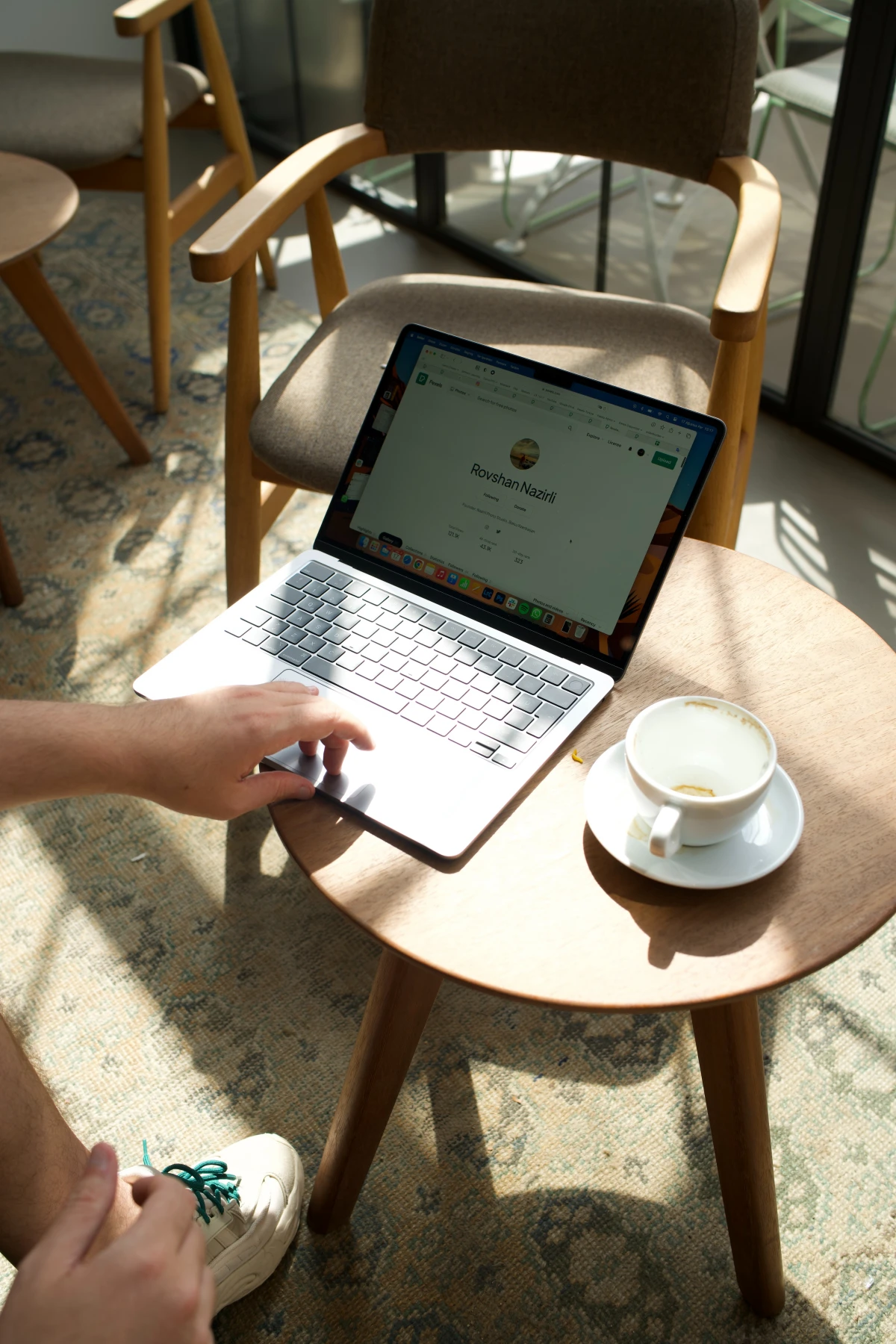
Building Your Perfect Setup: The Essential Items
Okay, so you know the theory. What should you actually put on the table? A great display usually includes a mix of these categories. You don’t need all of them, but a combination of three to five is the sweet spot.
- Something Tall & Structural: This gives you that crucial height. A simple vase is perfect. You can fill it with fresh flowers, or for a super low-maintenance option, use dried elements like eucalyptus or curly willow branches. Pro tip: I often just snip interesting branches from my backyard. They’re free and have a beautiful, natural shape.
- Something Living: A touch of green literally brings life into a room. Small succulents or snake plants are great because they’re hard to kill. Heads up! Always use a saucer or pot without a drainage hole to protect your table. I’ve seen countless water rings on beautiful wood tables from a leaky pot. Faux plants are getting shockingly realistic these days, so they’re a great option if you have no natural light—just be sure to dust them!
- Something Personal: This is what makes the table yours. It could be a unique rock from a family vacation or a beautiful bowl you inherited. It should be a conversation starter.
- Something Scented: A high-quality candle adds another sensory layer. A lidded candle is a great choice, as the lid keeps the wax from getting dusty. And please, be safe: never leave a burning candle unattended and keep it on a heat-proof surface like your tray.
- A Stack of Books: They’re called ‘coffee table books’ for a reason! Choose oversized books on subjects you actually love. The covers themselves are part of the design. Stack two or three, from largest on the bottom to smallest on top. For a modern, glam look, you see a lot of fashion-house books, but don’t sleep on vintage travelogues from a second-hand shop for adding character.
- A Functional, Beautiful Box: This is the secret to conquering everyday clutter. Find a decorative box made of wood, lacquer, or bone inlay. This is the new home for your remote controls, coasters, and reading glasses. Your homework: Measure your longest remote control. Now go find a box that’s at least that deep. Check the decor aisle at Target or search for ‘decorative storage box’ on Amazon or Etsy.
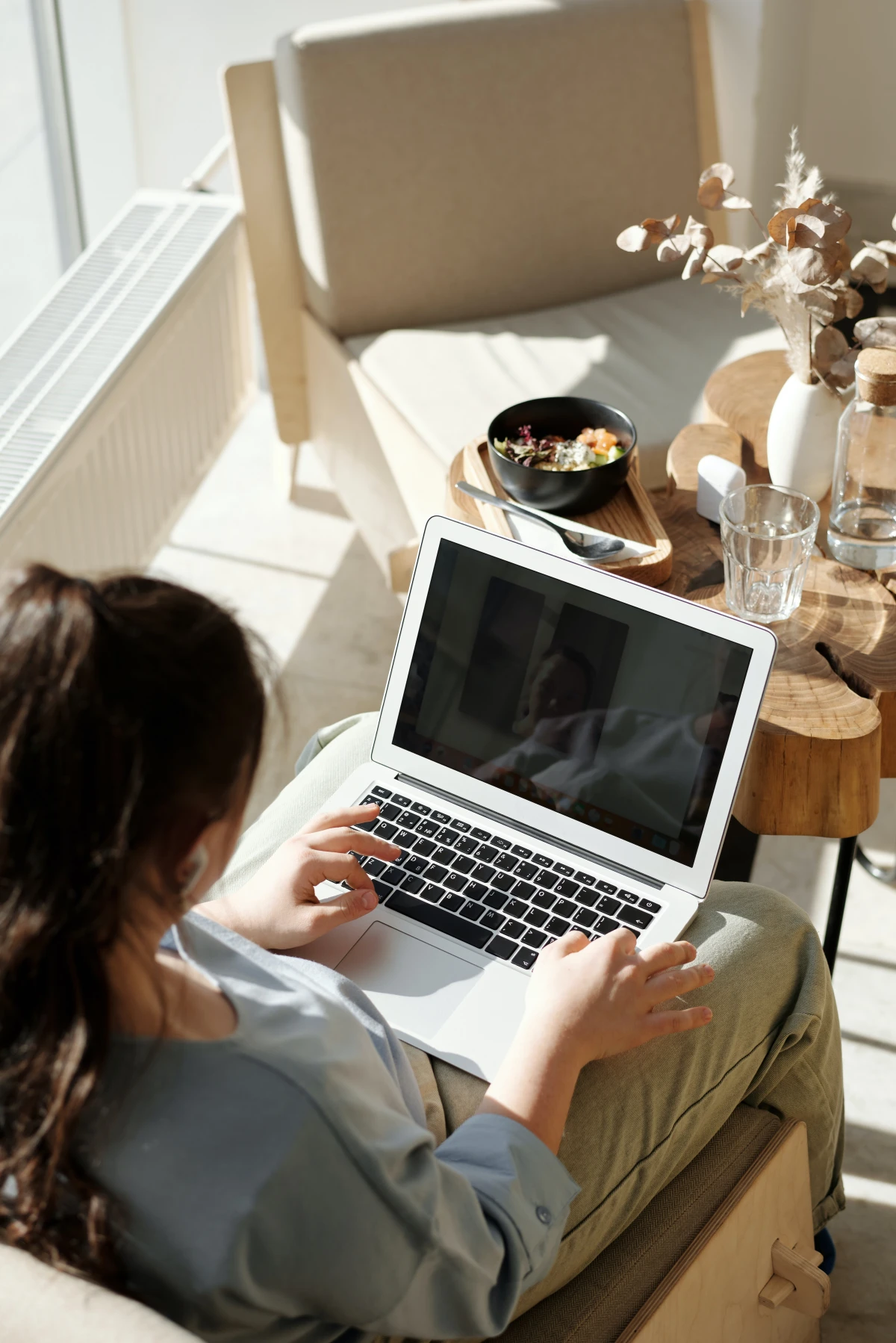
Styling on a Budget? No Problem.
You absolutely do not need to spend a fortune to get a great look. In fact, some of the most charming arrangements are the most affordable.
First, hit up thrift stores or flea markets. This is the BEST place to find unique trays, vases, and coffee table books for just a few bucks. Second, shop your own home! That pretty bowl sitting in your kitchen cabinet? It could be perfect for holding keys or other small items. And finally, use nature. A few shapely branches or some greenery snipped from your own backyard is free and looks incredible.
How to Care for Your Table (Please Read This!)
Your coffee table is an investment, so let’s make sure it lasts. Different materials need different care.
Wooden tables are the most common, and they bring such warmth. But be warned: coasters are non-negotiable. Water rings are the enemy. For a classic wood table, this is essential. Stone tables, like marble or travertine, are gorgeous but porous. This means they stain easily. Spills like red wine or coffee must be wiped up immediately. A modern glass or metal table gives an airy feel, but get ready to embrace your microfiber cloth—they show every single fingerprint and speck of dust.
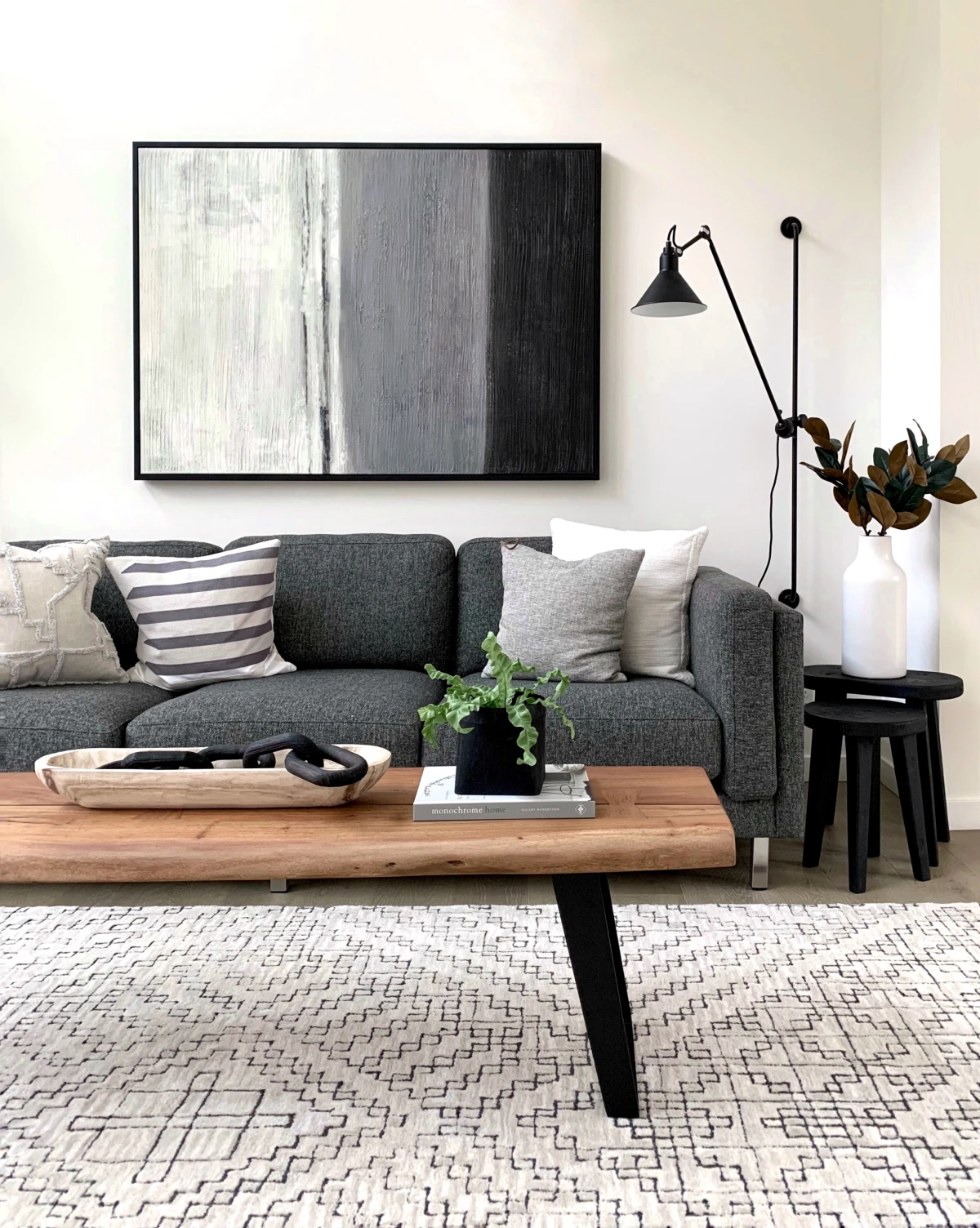
Let’s Get Real: The 5-Minute Coffee Table Rescue
Okay, let’s say your table is currently a disaster and you have guests coming in 10 minutes. Don’t panic. Here’s a quick reset that will instantly make things better.
- Grab all mugs, glasses, and plates and take them to the kitchen. (This is a 30-second fix!)
- Gather all remotes and tuck them into that decorative box or a nearby basket.
- Collect all mail, papers, and random clutter and put it in a designated spot (that isn’t this table).
- Give the surface a quick wipe-down.
- Straighten your stack of books and fluff your decor. Done.
See? It can be that fast. The key to long-term success is giving those clutter culprits a permanent home. The mail goes in a tray by the door. The remotes live in the box. It’s all about building simple, new habits.
Imagine the before: a table with a pile of mail, three remotes, and a laptop. Now, picture the after: a round wooden tray holding a small plant, a candle, and that lidded box for the remotes. The difference is night and day, and that transformation could cost you less than $50 at a place like HomeGoods.
Finally, Find Your Own Balance
Styling your coffee table isn’t about copying a magazine photo. It’s about creating a space that feels good to you. Use these ideas as a guide, but don’t be afraid to experiment. Add that quirky object you love. Let the arrangement change with the seasons. A well-styled coffee table is a small, daily pleasure—a pocket of beauty and order right in the center of your home that serves your life while also making you happy every time you see it.
Inspirational Gallery
The finishing touch you’re forgetting: Scent. A beautifully styled table engages the eyes, but a signature fragrance creates a truly immersive atmosphere. A single, high-quality candle does double duty as a sculptural object and an ambient mood-setter. Consider the warm, woody notes of a Diptyque ‘Feu de Bois’ or the fresh scent of a Jo Malone ‘Lime Basil & Mandarin’ to elevate the entire living room experience before it’s even lit.
The ‘Rule of Three’ is a designer’s secret weapon. It states that objects grouped in odd numbers are more appealing, memorable, and effective than even-numbered groupings.
On your coffee table, this means thinking in trios. Instead of two books, stack three. Instead of four coasters, display a set of three decorative ones. Try a small vase, a candle, and a decorative box. This simple principle creates a sense of casual, asymmetrical balance that feels effortlessly chic.
How do I handle the remote control clutter without hiding them away completely?
The key is stylish containment. Forget the plastic caddy. Opt for a beautiful, low-profile decorative box in a material that complements your decor—think a dark mango wood box for a rustic vibe or a lacquered piece from Jonathan Adler for a touch of glam. It keeps the tech accessible but out of sight, turning an eyesore into an integral part of your display.
A tray isn’t just a tray; it’s a stage. It corrals your chosen objects into a single, cohesive vignette, making the arrangement feel intentional. For a soft, minimalist look, a round oak tray from a brand like H&M Home works wonders. For a more structured, modern feel, a rectangular metal tray, perhaps from West Elm, provides clean lines and a solid anchor for your display. It’s the single easiest way to make a collection of items look like a curated composition.
- Adds instant warmth and texture.
- Softens hard-edged furniture.
- Introduces a personal, handmade feel.
The secret? Incorporating woven elements. A small rattan bowl for keys, a set of seagrass coasters, or even placing your entire arrangement on a round jute placemat can break up the monotony of wood, metal, and glass, adding an organic touch that feels both relaxed and sophisticated.
Marble Tray: Exudes luxury and gravitas. Its cool, smooth surface provides a high-contrast foundation for metallic or ceramic objects. It’s perfect for glamorous, traditional, or minimalist aesthetics. It is, however, heavy and can be prone to staining if not sealed.
Woven Rattan Tray: Offers a warm, organic, and bohemian feel. Its texture adds visual interest and a relaxed vibe, ideal for coastal or Scandi-inspired rooms. It’s lightweight and forgiving but offers a less formal look.
Choose based on the mood you want to create: timeless elegance or breezy comfort.
A study published in the ‘Personality and Social Psychology Bulletin’ found that individuals who described their homes as ‘cluttered’ or full of ‘unfinished projects’ were more likely to be fatigued and depressed.
This isn’t just about tidiness; it’s about mental clarity. Your coffee table is often in your direct line of sight during moments of relaxation. Keeping it intentionally styled isn’t a chore—it’s an act of self-care, creating a pocket of calm that helps quiet the visual noise of daily life.
Your coffee table books should be more than just props; they should be a window into your passions. Move beyond generic design books and think personally. Are you a film buff? A vintage copy of a book on Hitchcock. A travel lover? A vibrant Assouline volume on Capri. A foodie? A beautifully shot cookbook by Ottolenghi. These choices make your table a conversation starter and a true reflection of you, not just a catalog look.
One of the most common mistakes is using objects that are too small or ‘ditsy’. A collection of tiny, unrelated trinkets can look more like clutter than a collection. It’s better to have fewer, larger-scale items. Instead of five tiny votives, choose one substantial hurricane lamp. Instead of a tiny succulent, opt for a small orchid or a vase with a few dramatic branches. Scale gives your arrangement presence and impact.
To get that curated, high-end ‘Modern Organic’ look, start with a foundation of natural texture. A travertine or light wood tray is perfect.
- Height: Add a ceramic vase (like those from Ferm Living or CB2) with a few stems of dried pampas grass or eucalyptus.
- Substance: Include a stack of two aesthetically pleasing books on art or architecture.
- Sculpture: Finish with a ‘found’ object—a piece of coral, a smooth river stone, or a small, interesting brass figurine.










